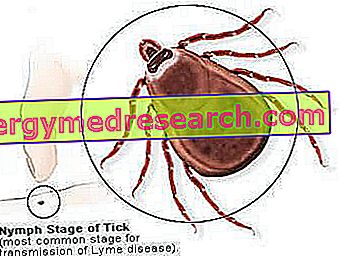Nutritional properties
The eggs are a strongly lipidic and equally protein food; in Italy, when not specified, "eggs" means those of oviparous hen, relatively differentiated and cataloged on the basis of specific hygienic-product specifications.

Why are eggs food? Eggs are considered a food because they are edible products in one or more of their parts (except for the shell, almost exclusively inorganic), containing nutrients, easily chewable, digestible and absorbable, and free of toxic substances.
1st group of foods
In our country, the major nutrition institutions (INN and SINU) distinguish and differentiate foods in groups VII:
- Group I: meat, fish and eggs
- Group II: milk and derivatives
- Group III: cereals and derivatives
- Group IV: legumes
- Group V: condiment fats
- Group VI: yellow or green vegetables and fruit, sources of vitamin A
- Group VII: vegetables and fruits rich in vitamin C.
This subdivision has a simple cataloging function and has nothing to do with the IMPORTANCE of food or with the recommended consumption FREQUENCY; rather, it seems to bring together all the products having similar nutritional characteristics in representative groups.
Group I - meat, fish (fishery products) and eggs: what all these foods have in common is the high biological value of the proteins contained in them (according to which it should also contain the group II of milk and derivatives). They are all rich in B-complex vitamins and are characterized by a variable amount of lipids; They do NOT contain significant amounts of carbohydrates.
The eggs, in particular, also contain excellent amounts of vitamin A and its precursors (β carotene), mineral salts such as phosphorus (P), zinc (Zn), sulfur (S) and iron (Fe); the latter in a bioavailable form (heme or ferrous iron).
An average whole chicken egg weighs about 60g, of which 53g consisting of egg white and yolk. These provide about 70kcal deriving from protides 6, 6g and lipids (4, 5g) The nutritional intake listed so far, all in all it looks good, the only flaw is the lipid portion of cholesterol which amounts to 190-200mg, taking also considering that fatty acids are mostly saturated. To learn more, read the article: eggs and cholesterol
- Having said this, it is possible to establish that the average intake of eggs in the diet could probably be 3-4 weekly eggs, including those hidden in food (which can be traced back to the labels on the packages).
What eggs do you eat?
On the market it is possible to find different types of eggs and different sizes; the oviparous animals exploited in Italy are only birds, among which we remember: hen, quail, goose, duck, guinea fowl, turkey etc.
With regard to the information retrieved from the food composition tables it is also possible to make a comparison:
| HEN EGG | DUCK EGG | EGG OF OCA | TURKEY EGG | |
 | ||||
| Water (g) | 70.9 | 70.9 | 69.7 | 72.6 |
| Proteins (g) | 12.4 | 12.2 | 13.8 | 12.8 |
| Lipids (g) | 8.7 | 15.4 | 14.4 | 10.2 |
| Saturated (g) | 3:17 | 3.68 | 3.6 | 3.64 |
| Monounsaturated (g) | 2:58 | 6:52 | 5.74 | 4:57 |
| Polyunsaturated (g) | 1:26 | 2.98 | 1:51 | 1:38 |
| Linoleic (g) | 1:06 | 2:56 | 0.68 | 1:17 |
| Linolenic (g) | 00:04 | 0.1 | 00:55 | 00:08 |
| Cholesterol (mg) | 371 | / ND | / ND | / ND |
| Carbohydrates available | / ND | 0.7 | 1.0 | 1.0 |
| Energy (kcal) | 128 | 190 | 189 | 147 |
| Sodium (mg) | 137 | 122 | / ND | / ND |
| Potassium (mg) | 133 | 129 | / ND | / ND |
| Iron (mg) | 1.5 | 2.8 | 2.6 | 2.5 |
| Calcium (mg) | 48 | 57 | 52 | 50 |
| Phosphorus (mg) | 210 | 195 | 200 | 200 |
| Magnesium (mg) | 13 | 13 | / ND | / ND |
| Zinc (mg) | 1.2 | / ND | / ND | / ND |
| Copper (mg) | 00:06 | / ND | / ND | / ND |
| Selenium (microg) | 5.8 | / ND | / ND | / ND |
| Thiamine (mg) | 00:09 | 00:15 | 0.1 | 00:15 |
| Riboflavin (mg) | 0.3 | 0.3 | 0.3 | 0.3 |
| Niacin (mg) | 0.1 | 0.1 | 0.1 | 0.1 |
| Vitamin A and retinol equivalents (microg) | 225 | 360 | 330 | 225 |
As can be seen from the above values, the substantial difference between the different types of eggs is in the energy supply and in the lipid one; at the same time there are also small differences in the salt contribution (especially iron), but in principle it is possible to state that the use of chicken eggs or other species is easily replaceable.
In the event that there are alterations in the blood lipid profile (hypercholesterolemia) it is advisable to prefer chicken eggs or turkey eggs to goose or duck eggs.
Bibliography :
- Food - V. Balboni - Alphatest - page 56
- Food composition tables - National Institute for Food and Nutrition Research (INRAN)



